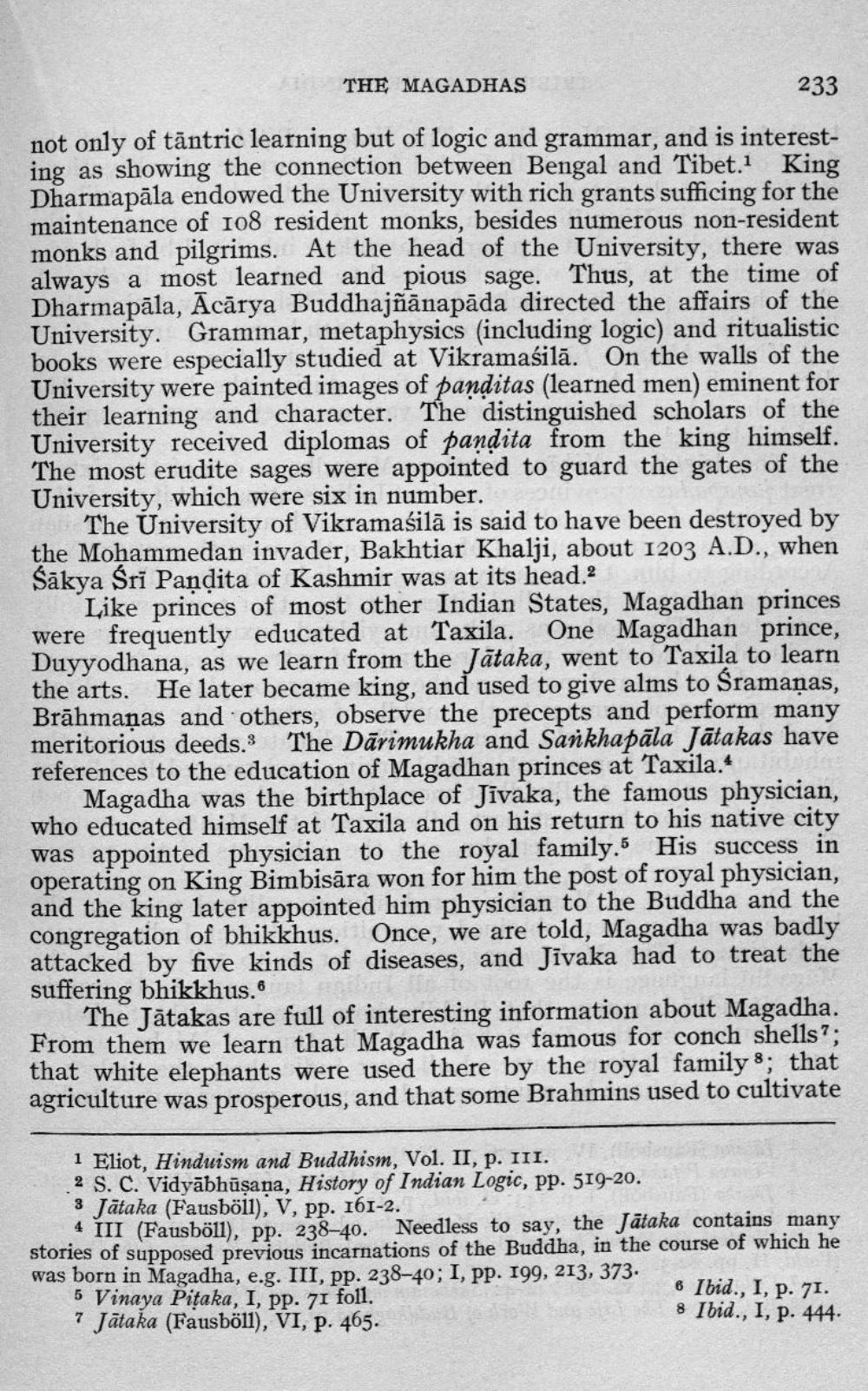________________
THE MAGADHAS
233
not only of tāntric learning but of logic and grammar, and is interesting as showing the connection between Bengal and Tibet.1 King Dharmapāla endowed the University with rich grants sufficing for the maintenance of 108 resident monks, besides numerous non-resident monks and pilgrims. At the head of the University, there was always a most learned and pious sage. Thus, at the time of Dharmapāla, Ācārya Buddhajñānapāda directed the affairs of the University. Grammar, metaphysics (including logic) and ritualistic books were especially studied at Vikramasilā. On the walls of the University were painted images of panditas (learned men) eminent for their learning and character. The distinguished scholars of the University received diplomas of pandita from the king himself. The most erudite sages were appointed to guard the gates of the University, which were six in number.
The University of Vikramasilā is said to have been destroyed by the Mohammedan invader, Bakhtiar Khalji, about 1203 A.D., when Sākya Śrī Paņdita of Kashmir was at its head.2
Like princes of most other Indian States, Magadhan princes were frequently educated at Taxila. One Magadhan prince, Duyyodhana, as we learn from the Jātaka, went to Taxila to learn the arts. He later became king, and used to give alms to Sramaņas, Brāhmaṇas and others, observe the precepts and perform many meritorious deeds. The Dārimukha and Sankhapāla Jātakas have references to the education of Magadhan princes at Taxila.
Magadha was the birthplace of Jivaka, the famous physician, who educated himself at Taxila and on his return to his native city was appointed physician to the royal family. His success in operating on King Bimbisāra won for him the post of royal physician, and the king later appointed him physician to the Buddha and the congregation of bhikkhus. Once, we are told, Magadha was badly attacked by five kinds of diseases, and Jivaka had to treat the suffering bhikkhus.
The Jātakas are full of interesting information about Magadha. From them we learn that Magadha was famous for conch shells?; that white elephants were used there by the royal family 8; that agriculture was prosperous, and that some Brahmins used to cultivate
1 Eliot, Hinduism and Buddhism, Vol. II, p. III. 2 S. C. Vidyābhūsaņa, History of Indian Logic, pp. 519-20. 3 Jataka (Fausb_11), V, pp. I6I-2.
4 III (Fausböll), pp. 238-40. Needless to say, the Jätaka contains many stories of supposed previous incarnations of the Buddha, in the course of which he was born in Magadha, e.g. III, pp. 238-40; I, pp. 199, 213, 373. 5 Vinaya Pitaka, I, pp. 71 foll.
6 Ibid., I, p. 71. 7 Jataka (Fausböll), VI, P. 465.
8 Ibid., I, p. 444.




